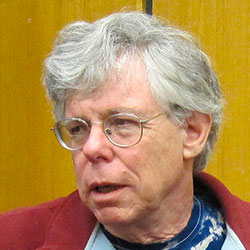
About
Professor Quinn's lab is no longer active and he is not accepting students.
William “Chip” Quinn received his BA in Biology from Harvard College in 1966 and his PhD from Princeton in 1971. During his postdoctoral work at CalTech, he produced the first evidence that fruit flies are capable of associative learning, a finding that made it possible to apply classical genetic techniques to investigate the molecular machinery underlying learning. Joining MIT in 1984, Quinn’s lab investigated the molecular mechanisms underlying learning acquisition and memory storage by inducing and selecting single-gene mutations that affect learning or memory, and by engineering transgenic fly strains that disrupt these processes. In addition to his appointment in MIT’s Department of Brain and Cognitive Sciences, he is also a joint faculty member with the Department of Biology, and has held a faculty position at Princeton University.
Research
Genetic and Molecular Studies of Learning and Memory in Drosophila
Fruit flies can learn. They can identify a specific chemical odor that they have experienced with electric shock and avoid it. Moreover, they can remember to avoid it for several days. The Quinn lab is investigating the molecular mechanisms underlying learning acquisition and memory storage by inducing and selecting single-gene mutations that affect learning or memory, and by engineering transgenic fly strains that disrupt these processes.
Two of the first learning mutations-rutabaga and dunce- affect the enzymes adenylyl cyclase and cyclic-AMP phosphodiesterase respectively. This implicates the second-messenger molecule cyclic AMP as central in Drosophila learning. The lab has manipulated enzymes downstream from cyclic AMP (e.g.. CREB) by genetic engineering and has found defects on learning and memory. Nevertheless they believe that the straightest path to genuinely novel information about learning involves isolating new mutants that affect learning and cloning the altered genes. Of the mutants we have isolated radish has by far the most interesting behavior. Mutant radish flies flunk one long-term memory test established by vertebrate researchers, but they pass the second like normal flies. Thus studies with radish indicate that there are at least two separate types of long-term memory. Understanding one form of long-term memory - consolidated memory - depends on cloning the radish gene. The lab has localized the radish gene to a 180-kilobase interval of DNA on the fly's X-chromosome and is intensively involved in finding the relevant gene transcript within this interval.
Amnesiac was isolated years ago in the Quinn lab as a forgetful fly. The lab isolated another (rapidly clonable) mutant allele of amnesiac on the basis of its ability to suppress the female-sterility of another learning mutant,dunce.The amnesiac gene encodes the precursor of a peptide neurotransmitter.
Selecting mutant strains by breeding populations and testing them for learning is labor-intensive. The expedited cloning of amnesiac indicated a shortcut. Mutant, dunce flies lack a cyclic AMP (cAMP) metabolizing enzyme, and these flies have elevated cAMP levels in their tissues. Learning-mutant amnesiac (in cAMP-stimulatory neuropeptide) have compensatory defects; these restore female fertility. The lab has started a generalized screen for secondary mutations that suppress dunce's female sterility, and they have isolated several intriguing new genes -e.g., novel transcription factors and identified second-messenger molecules.
Teaching
9.09J Cellular neurobiology
9.301J Neural plasticity in learning and memory
9.322J Genetic methods in neurobiology
Publications
Folkers E, Waddell S, Quinn WG. The Drosophila radish gene encodes a protein required for anesthesia-resistant memory. Proc Natl Acad Sci U S A. 2006 Nov 14;103(46):17496-500. Epub 2006 Nov 6.
Quinn WG. Neurobiology: memories of a fruitfly. Nature. 2006 Feb 2;439(7076):546-8.
Quinn WG. Nematodes learn: now what? Nat Neurosci. 2005 Dec;8(12):1639-40. Quinn WG. A Drosophila fearomone response proceeds through a single glomerulus. Nat Neurosci. 2004 Dec;7(12):1290-1.

